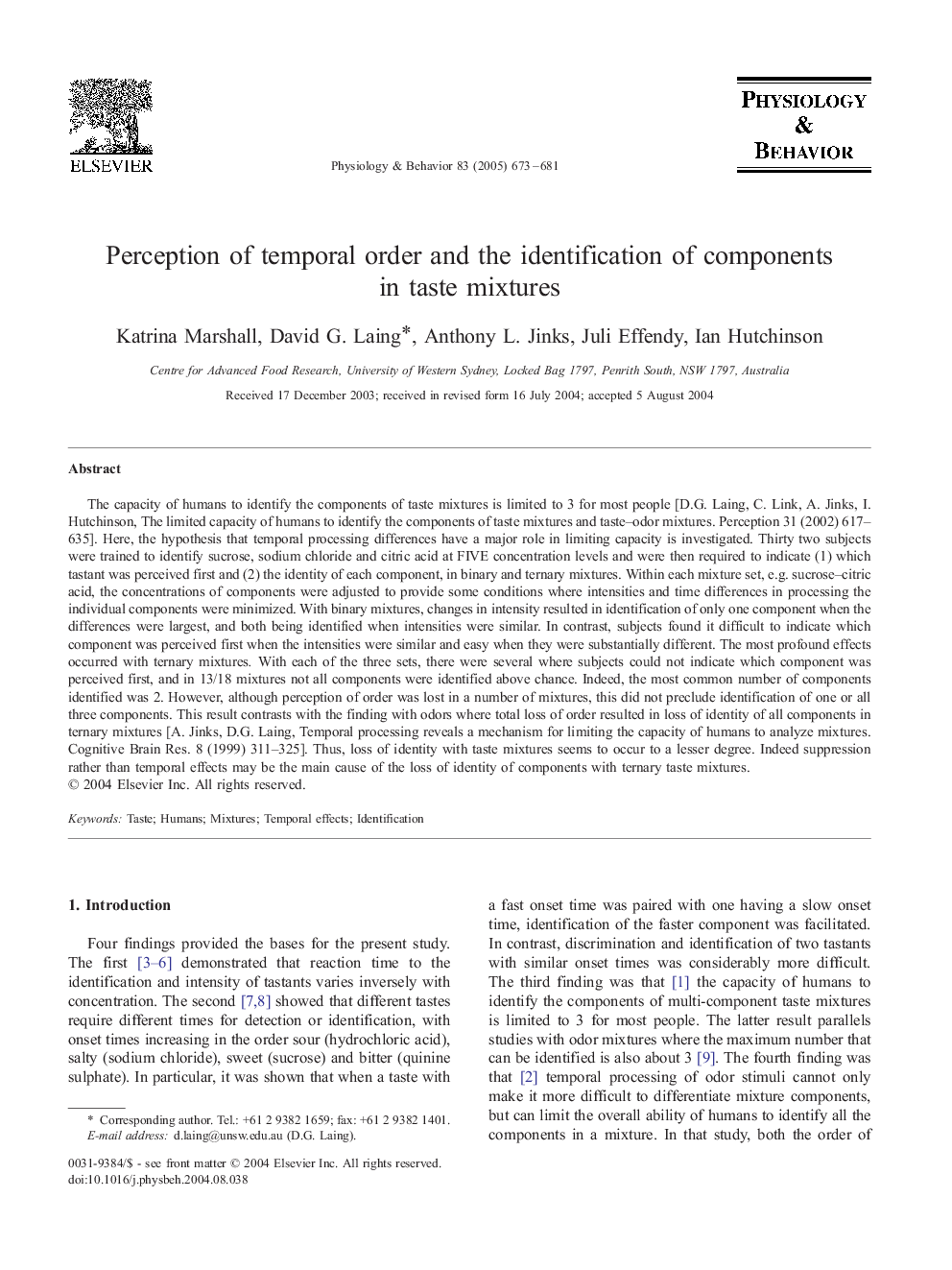| کد مقاله | کد نشریه | سال انتشار | مقاله انگلیسی | نسخه تمام متن |
|---|---|---|---|---|
| 9149910 | 1166442 | 2005 | 9 صفحه PDF | دانلود رایگان |
عنوان انگلیسی مقاله ISI
Perception of temporal order and the identification of components in taste mixtures
دانلود مقاله + سفارش ترجمه
دانلود مقاله ISI انگلیسی
رایگان برای ایرانیان
کلمات کلیدی
موضوعات مرتبط
علوم زیستی و بیوفناوری
بیوشیمی، ژنتیک و زیست شناسی مولکولی
فیزیولوژی
پیش نمایش صفحه اول مقاله

چکیده انگلیسی
The capacity of humans to identify the components of taste mixtures is limited to 3 for most people [D.G. Laing, C. Link, A. Jinks, I. Hutchinson, The limited capacity of humans to identify the components of taste mixtures and taste-odor mixtures. Perception 31 (2002) 617-635]. Here, the hypothesis that temporal processing differences have a major role in limiting capacity is investigated. Thirty two subjects were trained to identify sucrose, sodium chloride and citric acid at FIVE concentration levels and were then required to indicate (1) which tastant was perceived first and (2) the identity of each component, in binary and ternary mixtures. Within each mixture set, e.g. sucrose-citric acid, the concentrations of components were adjusted to provide some conditions where intensities and time differences in processing the individual components were minimized. With binary mixtures, changes in intensity resulted in identification of only one component when the differences were largest, and both being identified when intensities were similar. In contrast, subjects found it difficult to indicate which component was perceived first when the intensities were similar and easy when they were substantially different. The most profound effects occurred with ternary mixtures. With each of the three sets, there were several where subjects could not indicate which component was perceived first, and in 13/18 mixtures not all components were identified above chance. Indeed, the most common number of components identified was 2. However, although perception of order was lost in a number of mixtures, this did not preclude identification of one or all three components. This result contrasts with the finding with odors where total loss of order resulted in loss of identity of all components in ternary mixtures [A. Jinks, D.G. Laing, Temporal processing reveals a mechanism for limiting the capacity of humans to analyze mixtures. Cognitive Brain Res. 8 (1999) 311-325]. Thus, loss of identity with taste mixtures seems to occur to a lesser degree. Indeed suppression rather than temporal effects may be the main cause of the loss of identity of components with ternary taste mixtures.
ناشر
Database: Elsevier - ScienceDirect (ساینس دایرکت)
Journal: Physiology & Behavior - Volume 83, Issue 5, 17 January 2005, Pages 673-681
Journal: Physiology & Behavior - Volume 83, Issue 5, 17 January 2005, Pages 673-681
نویسندگان
Katrina Marshall, David G. Laing, Anthony L. Jinks, Juli Effendy, Ian Hutchinson,